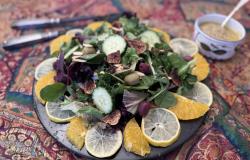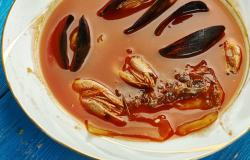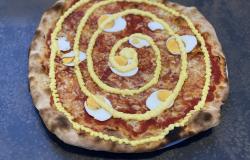Warm Up this January with Polenta Concia

Polenta is an ancient food in Italy, dating back to the Etruscans. Early versions of the porridge were made from millet, rye, and barley flour. It wasn’t until the 17th century, when field corn, a New World ingredient, was introduced to Europe, that polenta became a corn-based dish. It has always been a humble dish, but like so much of Italy’s “cucina povera,” it is now appreciated for its flavor, its versatility, and the way it lifts up other ingredients.
There are many regional variations: in Lombardy and the Veneto, a dish called “polenta e osei” pairs polenta with small roasted game birds. In Liguria, polenta, hearty winter vegetables and beans are slowly cooked down into a dense, nourishing stew called “polenta incatenata.” And in the Apennine Mountains of Abruzzo, polenta is poured out onto a large wooden board called a “spianatoia,” topped with sausages and ragù, and served as a communal dish.
But in Valle d’Aosta, Italy’s smallest region, tucked up in the northwest corner of the peninsula, polenta is not just a pantry staple; it is a daily ritual, the way a dish of pasta remains a daily ritual for many people in southern Italy. In Aosta itself, a cozy alpine city ringed with mountains, polenta is featured on every restaurant and osteria menu. Even the town’s Christmas market has two polenta stands, positioned side by side. This I discovered when my family and I spent the holidays there in 2018. Both stands almost always had customers lined up for warm bowls, no matter the time of day or night. The offerings were various: polenta drizzled with hot melted butter; polenta topped with smoky grilled sausages; polenta with beef stew called carbonnade; and my favorite, polenta “concia,” with lots of fontina Val d’Aosta, the region’s famous melty cheese, stirred in.
“Concia” is a tricky word to translate. It can mean tanned (as in a beach tan or a tanned hide); but also ‘dirty,’ ‘cured,’ ‘styled,’ or ‘fixed.’ My best guess is the latter applies here, where a bowl of plain porridge is “fixed” by the addition of a nearly obscene amount of Fontina. Use a blend of fine- and medium-grind polenta, as they do in Aosta. Serve this rich polenta as is, or topped with sausage, beef stew, or braised greens.
Serves 6-8 people
1. Measure the polenta into a medium heavy-bottomed saucepan or Dutch oven. Whisk in the water and salt. Set over medium-high and heat and bring to a boil. Reduce the heat to low and cook, stirring often to prevent the polenta from sticking to the bottom of the pot, for 40 to 45 minutes, until the grains are fully cooked. The polenta should bubble gently as it cooks. When it’s done, it will be thick and creamy but still pourable. If you find it is too thick towards the end of cooking, stir in a little more water.
2. Remove the pot from the heat and add the font, stirring vigorously until completely melted and incorporated. Stir in the butter and serve.





